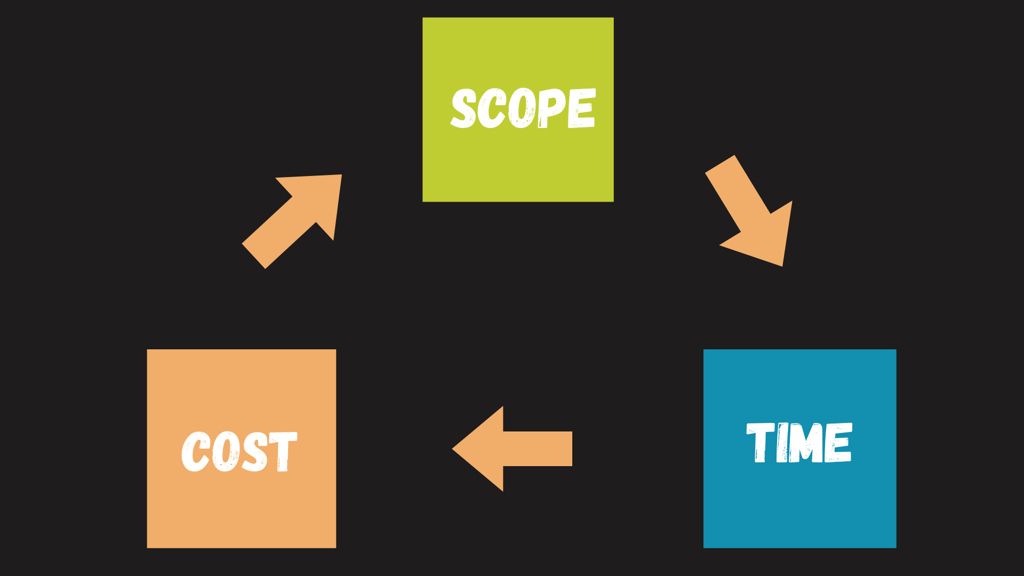How do time, cost, and scope interact in project management?
PROJECT MANAGEMENT


The iron triangle concept in project management explains the relationship between three primary project constraints: time, cost, and scope. These challenges are often depicted as the vertices of a triangle, with each side representing one of the challenges. The shape of the triangle highlights how these constraints are interrelated, and underscores the difficulty of changing one without having an impact on the others.
Time
is a crucial element in project management. It refers to the schedule or timeline of the project and represents the moment at which a task is completed to meet stakeholder expectations or deadlines. Time is of great importance in project management because delays can result in increased costs, missed opportunities, or stakeholder dissatisfaction. Therefore, it is essential to manage time efficiently to ensure successful project delivery.
Costs:
Costs refer to the financial resources allocated to a project, which include expenses associated with labor, materials, equipment, overhead, and other items. It is essential to manage costs effectively to remain within financial limits and ensure the economic viability of the project. Cost overruns can cause confusion, affect profitability, and threaten the success of the business.
Scope:
The scope is a crucial aspect that outlines the objectives, deliverables, and specifications of a project. It lays out what needs to be achieved or provided to meet the expectations and requirements of stakeholders. This encompasses the different products, activities, and information that relate to the final product or service. It also includes any potential adjustments that may be needed due to changing needs, stakeholder requests, or unexpected obstacles that may impact the project's timeline and budget.
The Iron Triangle concept highlights the inherent trade-offs that exist between three key factors: scope, time, and cost. For example, if the scope of a project is increased, it may require more time and resources to complete, which could lead to cost overruns or planning delays. Conversely, if efforts are made to accelerate the project timeline, it might require additional resources or higher costs to meet tight deadlines, which can significantly impact the project. Moreover, minimizing project costs may require cutting corners, sacrificing quality, or limiting project scope to stay within budget constraints.
Project managers must balance constraints to ensure success, meet expectations. Communication, risk management, and stakeholder engagement are crucial for optimizing outcomes and informed decisions.
